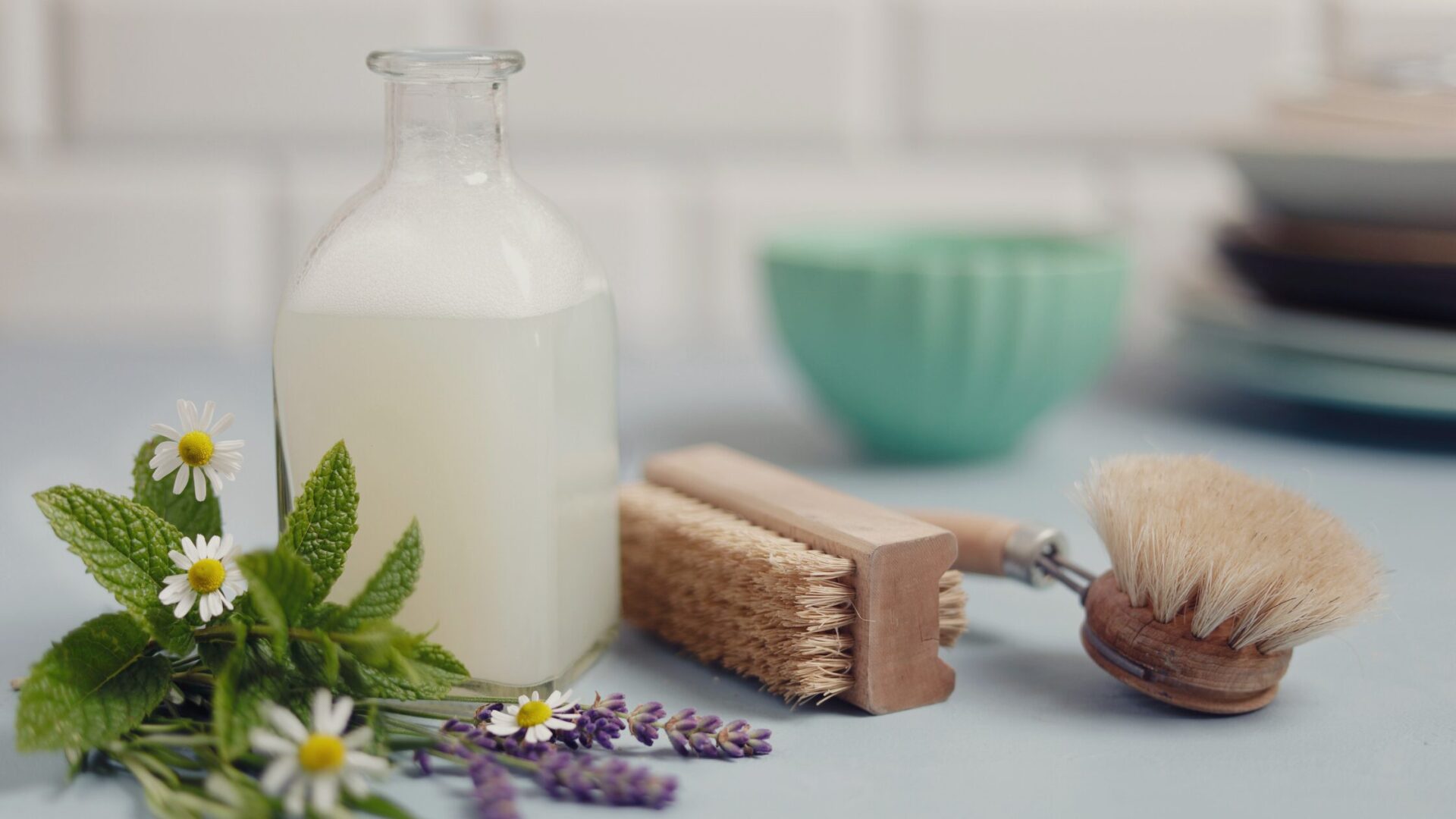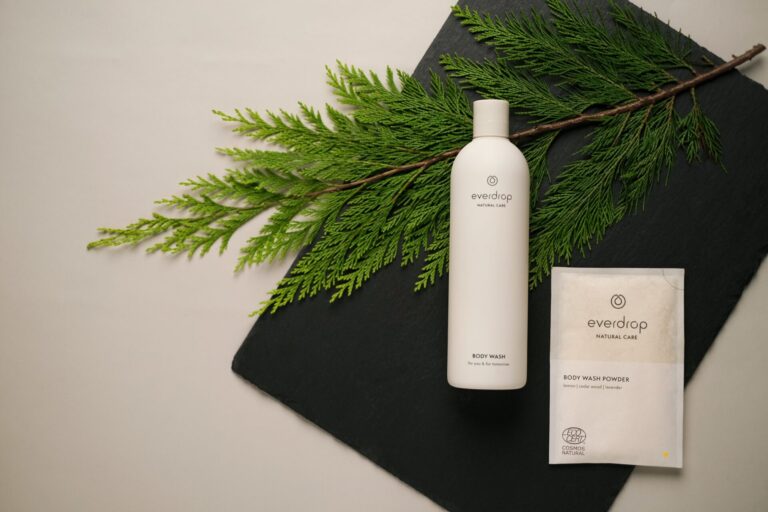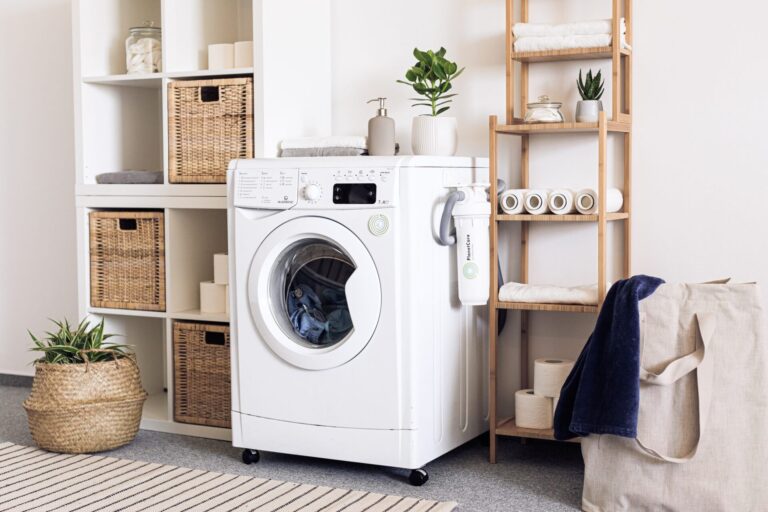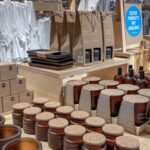Every evening, as I stand at my kitchen sink, I’m reminded of a simple truth: the small choices we make ripple outward. For years, I reached for conventional plastic sponges without a second thought—until one day, I paused and asked myself, “What can I change first?”
That question became the beginning of a quiet revolution in my kitchen. Today, I want to share what I’ve learned about transitioning to plastic-free dishwashing, drawing inspiration from Japanese traditional wisdom and modern sustainable practices. This isn’t about perfection. It’s about taking one mindful step at a time.
Understanding What “Plastic-Free” Really Means
Before we dive into specific products, let’s clarify what we’re actually looking for. The term “plastic-free” sounds straightforward, but shopping for truly sustainable kitchen items can be surprisingly complex. I’ve picked up products labeled “natural” or “plant-derived,” only to discover later that they contained plastic blends or synthetic coatings.
Biodegradability is your compass here. This refers to a material’s ability to decompose naturally through microbial action, eventually breaking down into water and carbon dioxide. When you’re shopping, flip the package over and look for clear material breakdowns—not just marketing buzzwords on the front.
Here’s a crucial tip I learned the hard way: “plant-derived” doesn’t automatically mean plastic-free. Some manufacturers use plant-based materials as a starting point but add plastics during processing. The key is reading the fine print and looking for products made from 100% natural materials like cotton, wood pulp, palm fiber, or coconut husk.
Find other plastic-free products
Traditional Japanese Tools That Transform Dishwashing
Japanese culture has long embraced sustainable practices, and this wisdom extends beautifully into the kitchen. Let me introduce you to some traditional and modern tools that changed how I approach dishwashing.
Biwako Fukin: The Cloth That Needs No Detergent
The first time someone told me I could wash greasy dishes with just a cloth and hot water—no detergent—I was skeptical. But biwako fukin, a traditional Japanese cotton cloth, proved me wrong immediately.
These remarkable cloths possess exceptional absorbency and oil-lifting properties. What makes them special is their ability to remove grease through texture and heat alone. I now use mine for everything from wiping down counters to washing lightly soiled dishes, and I simply toss it in the washing machine when it needs refreshing.
Chokō Tape Biwako Fukin
Why I recommend it:
- 100% cotton, made in Japan with safe, natural materials
- No detergent needed—kind to both the environment and your hands
- Excellent absorbency and oil absorption, built to last
Chokō Tape’s “Biwako Fukin” is a 100% cotton, Japanese-made cloth carefully woven using a traditional water-wheel spinning machine called “gara-bō.” It removes even grease with just hot water, making it an eco-friendly choice that’s gentle on both hands and the environment. With outstanding absorbency and quick-drying properties, it’s versatile enough for everything from dishwashing to face washing. Durable and long-lasting, it becomes more beloved with each use.
ethical house Biwako Fukin
Why I recommend it:
- Made from 100% pesticide-free cotton
- Manufactured without chemicals for minimal environmental impact
- Handcrafted in Japan by skilled artisans
ethical house’s “Biwako Fukin” is made from 100% pesticide-free cotton using environmentally conscious methods—no refining agents or other chemicals. Each piece is crafted by skilled artisans who preserve traditional techniques, resulting in a sturdy, long-lasting cloth. It becomes softer with each use and fits seamlessly into your daily kitchen routine. A perfect choice for sustainable living.
Care tip: A quality biwako fukin can last over a year with proper care. Boil-sanitize it weekly, let it dry completely between uses, and watch as this simple cloth becomes one of your most-used kitchen tools.
Kame no Ko Tawashi: The Scrubber Built to Last
If biwako fukin is gentle persuasion, then kame no ko tawashi is confident strength. These plant-fiber scrubbers have been a Japanese kitchen staple since 1907. Their name translates to “tortoise shell scrubber,” and like their namesake, they’re built to last.
I reach for my tawashi when facing stubborn, stuck-on food—the kind that makes you want to just soak the pan overnight. The balanced texture is firm enough to tackle burnt residue yet won’t scratch your cookware.
Nishio Shōten Kame no Ko Tawashi
Why I recommend it:
- Founded in 1907, over 100 years of unchanged quality—a true long-seller
- Made from natural materials (palm, hemp palm, sisal hemp)
- Hand-finished by skilled artisans for exceptional durability
The original “Kame no Ko Tawashi” has been a Japanese masterpiece for over a century. Using natural palm and hemp palm, each one is carefully hand-finished by artisans. The perfectly balanced texture—neither too hard nor too soft—effectively removes dirt from dishes and cutting boards. Its durable construction means it lasts long, making it an environmentally friendly, sustainable household item.
Replacement guide: Replace your tawashi when the bristles wear down, typically after 3–6 months of daily use.
Natural Sponges: Choosing Wisely
Beyond traditional Japanese tools, several modern eco-friendly options deserve your attention.
Cellulose Sponges: Check the Fine Print
Natural cellulose sponges made from wood pulp offer a familiar feel for those transitioning from conventional sponges. However, scrutinize the product carefully. Many cellulose sponges include nylon or polyester reinforcement layers that negate their environmental benefits.
Look for 100% natural options without any plastic reinforcement.
mana. ORGANIC LIVING Natural Material Sponge
Why I recommend it:
- 100% natural materials—loofah and cellulose
- Biodegradable, returns to soil, prevents microplastic pollution
- FSC certified & 1% of sales donated to environmental conservation
mana. ORGANIC LIVING’s “Natural Material Sponge” features a two-layer structure combining loofah and wood-pulp cellulose. It handles both stubborn dirt and delicate dishes with just this one item. Made from 100% natural materials with a gentle feel, it’s fully biodegradable after use. With plastic-free shipping and FSC certification, 1% of sales supports environmental conservation activities. A sponge that transforms your daily kitchen routine into a sustainable choice.
Replacement guide: Natural cellulose sponges typically last 1–2 months with regular use.
Brushes and Tools: Where Function Meets Sustainability
For bottle brushes and dish brushes, I prioritize wooden handles and natural fiber bristles. These tools bring both practicality and environmental consciousness to your sink.
Bottle Brushes: Reaching Where Sponges Can’t
When selecting bottle brushes, look for natural material handles and bristles. Check that the length reaches deep into water bottles and glasses, and that the bristles have appropriate stiffness for effective cleaning.
mana. ORGANIC LIVING Bottle Brush Long
Why I recommend it:
- 100% natural materials, completely plastic-free
- Uses FSC®-certified natural wood
- 1% of sales donated to environmental conservation
mana. ORGANIC LIVING’s “Bottle Brush Long” is a sustainable brush made from natural beech wood and coconut fiber. Using no plastic whatsoever, its design is gentle on both the planet and your hands. It uses FSC®-certified wood, supporting responsible forest management. It reaches deep into water bottles and glasses, and works well for general kitchen cleaning too. An ethical choice with 1% of sales supporting environmental conservation activities.
M DASANAYAKA Coconut Bottle Brush
Why I recommend it:
- 100% natural materials—coconut fiber and rubberwood
- “Returns to earth” plastic-free design
- Portion of profits donated to children in need
A bottle brush made entirely from natural materials, gentle on both the environment and your hands. The soft coconut fiber bristles reach firmly to bottle bottoms and corners. The rubberwood handle has a warm feel and comfortable texture with each use. A choice that’s kind to both the earth and people, as an alternative to plastic brushes. Cherishing connections with Sri Lanka, a portion of profits supports children in need.
Dish Brushes: Daily Workhorses
When selecting dish brushes, check the material of the handle joints carefully. Joints sometimes use metal or plastic, so look for products made as much as possible from natural materials only. If the product offers replacement heads, you can continue using the handle for years, making it economical and sustainable.
mana. ORGANIC LIVING Eco Brush Short
Why I recommend it:
- Bamboo and sisal hemp, 100% natural material multi-purpose brush
- Uses FSC®-certified organic bamboo
- 1% of sales donated to coral reef conservation activities
The “Eco Brush Short” is a 100% natural material sustainable brush made only from bamboo and sisal hemp. Its multi-purpose design works throughout the house—kitchen, bathroom, laundry. Uses FSC®-certified bamboo with zero plastic, reducing environmental impact. Biodegradable, returning to soil after use. Plus, 1% of sales is donated to coral reef conservation activities in Okinawa—an eco-item that’s truly kind to the earth.
Redecker Handle Kitchen Brush
Why I recommend it:
- Made from natural materials only (unpainted beech × plant fiber)
- Handcrafted by skilled artisans
- Becomes more familiar with use, designed for long-term enjoyment
A handle kitchen brush from Redecker, the established German manufacturer founded in 1935. It uses an unpainted beech handle and plant-fiber brush, with a natural material finish using no chemicals. Each piece is carefully crafted by skilled artisans, becoming more familiar with use and lasting for years. The design allows hanging on a hook for easy drying—a sustainable household item that fits naturally into your kitchen.
Finding Your Balance
Here’s something important: Aiming for perfection can sometimes make it harder to keep going. If plastic parts remain for structural or sanitary reasons, there’s no need to criticize yourself. What matters is treating that item carefully and using it for a long time. By washing more frequently and replacing at appropriate times, you can minimize environmental impact.
Cleaning Agents: Simple and Effective
Switching tools is only half the equation. What you clean with matters just as much as what you clean on.
Bar Dish Soap: Surprisingly Effective
I’ll admit, I doubted bar soap’s ability to tackle real kitchen grease. But a quality additive-free bar dish soap changed my mind on the first try.
How to use it: Rub the bar directly onto your damp sponge or cloth to create a rich lather, then wash as usual with lukewarm water. The key points are creating good lather and rinsing thoroughly under running water so no soap residue remains.
Important note: Choose soap formulated specifically for dishes rather than hand or body soap. Dish soap contains less oil, making it better suited for washing dishes.
Shabondama Kitchen Soap Bar Type
Why I recommend it:
- 100% naturally derived, additive-free soap
- Gentle on hands with clean rinsing
- Quickly biodegrades after drainage, environmentally friendly
Shabondama’s Kitchen Soap Bar Type is an additive-free soap you can use with confidence for daily dishwashing. It uses no synthetic surfactants or fragrances—made only from pure soap ingredients. It lathers well and removes even stubborn grease cleanly, yet feels gentle on hands. Biodegradable, it quickly returns to nature after drainage. Perfect for sustainable living—one bar that washes dishes, cutting boards, and cloths.
Pro tip: One bar lasts my household 2-3 months, eliminating dozens of plastic bottles annually.
Baking Soda: Your Gentle Abrasive
For light burns and tea stains, baking soda works wonders. Add a small amount of water to baking soda to create a paste, then apply it to the dirty area. After a few minutes, scrub with a sponge or tawashi and it comes off easily. When using it as an abrasive, be careful not to scratch soft materials.
Your First Step Starts Today
Here’s what I want you to do: Don’t overthrow your entire kitchen tomorrow. Instead, identify one thing you can change this week.
Maybe it’s replacing that tired plastic sponge with a natural cellulose alternative. Perhaps it’s trying a bar of dish soap alongside your liquid detergent to compare performance. Or maybe you’re ready to embrace the traditional approach and order your first biwako fukin cloth.
Try this: Throw away one old plastic sponge and try washing your first dish with one kame no ko tawashi and bar dish soap. Just comparing the feel is fine. If you think, “I could keep doing this,” that’s your first step. There’s no need to change everything at once. Take it one item at a time, at your own pace.
Start small. Observe how it feels. Notice the subtle differences—the texture in your hands, the way water moves, the satisfaction of knowing this item will eventually return to the earth rather than persist in a landfill for centuries.
The Bigger Picture
This isn’t really about sponges and soap, is it? It’s about recognizing that we shape the world through daily decisions most of us make on autopilot. Every time you choose a biodegradable scrubber over a plastic one, you’re casting a vote for the kind of future you want to inhabit.
Japanese culture embraces the concept of mottainai—a sense of regret over waste and deep respect for resources. It’s not about guilt or deprivation, but rather mindful appreciation for the objects that serve us and the earth that provides them.
The small question “What can I change first?” eventually leads to big habits. Without aiming for perfection, your kitchen changes just by replacing one item.
I myself started with just one biwako fukin cloth. Now most of my kitchen items are plastic-free. But that didn’t happen overnight. It was a process of trying one thing, continuing if I liked it, and trying another approach if it didn’t work—trial and error built up over time.
Your plastic-free kitchen journey doesn’t require sacrifice. It invites discovery—of traditional wisdom, innovative materials, and the surprising satisfaction that comes from aligning daily actions with deeply held values.
So I’ll ask you the question that started my own transformation: What can you change first?
The answer is waiting at your kitchen sink.


















